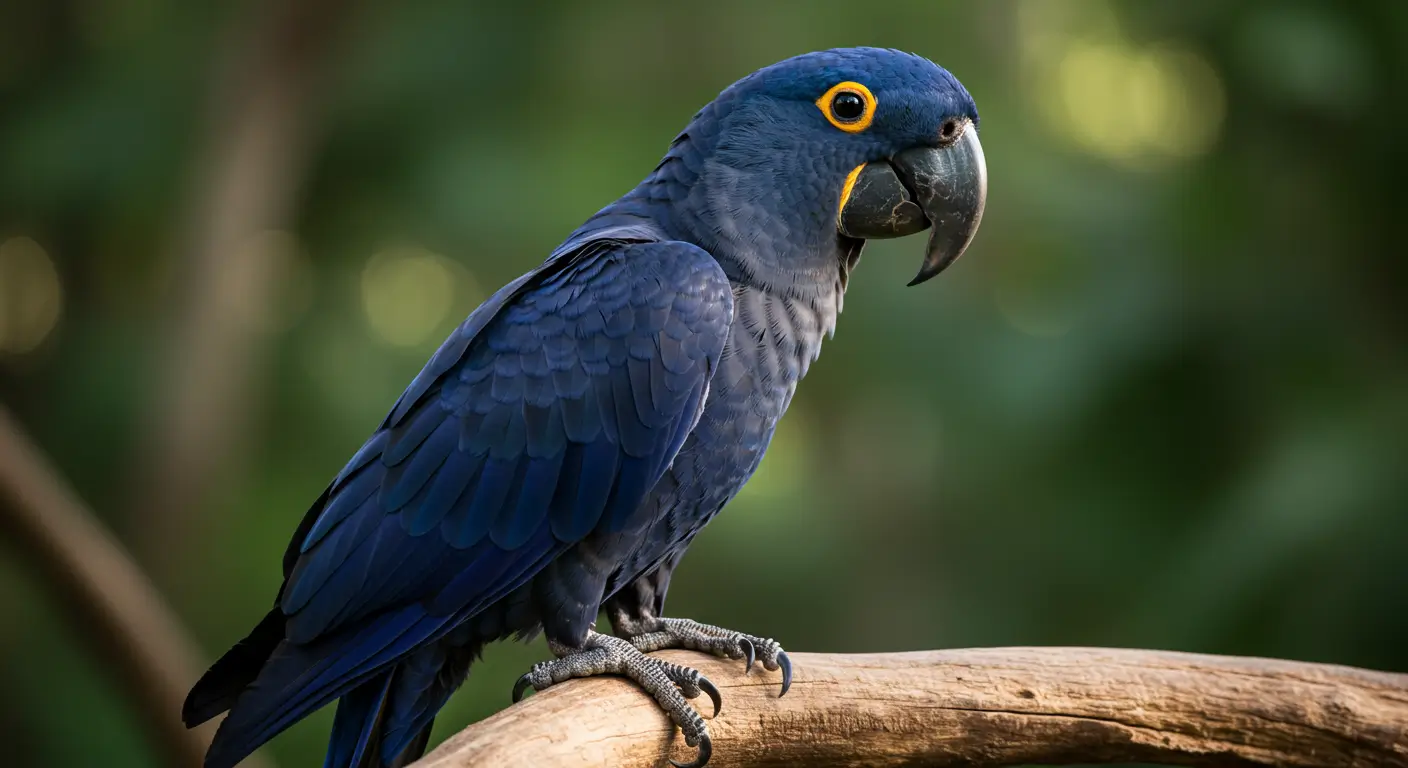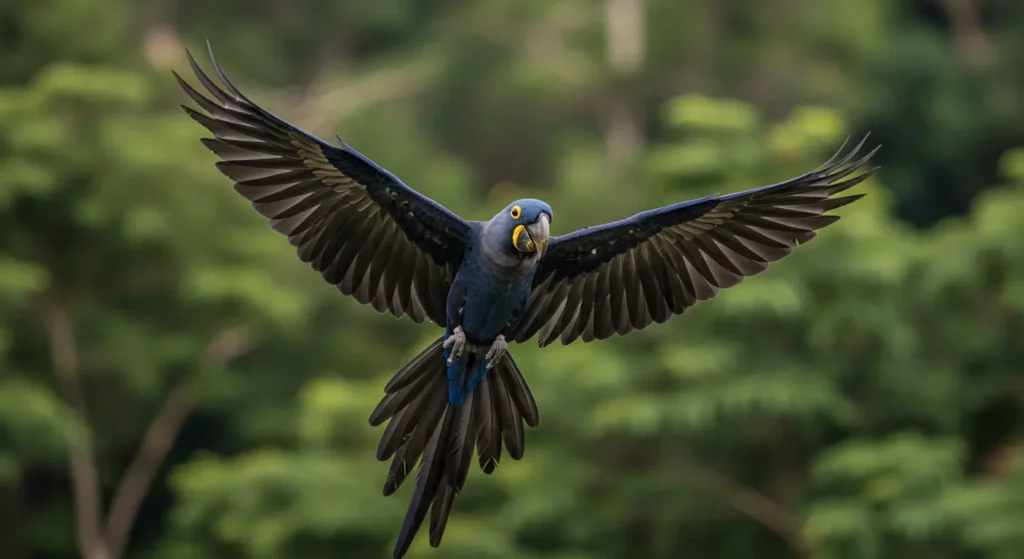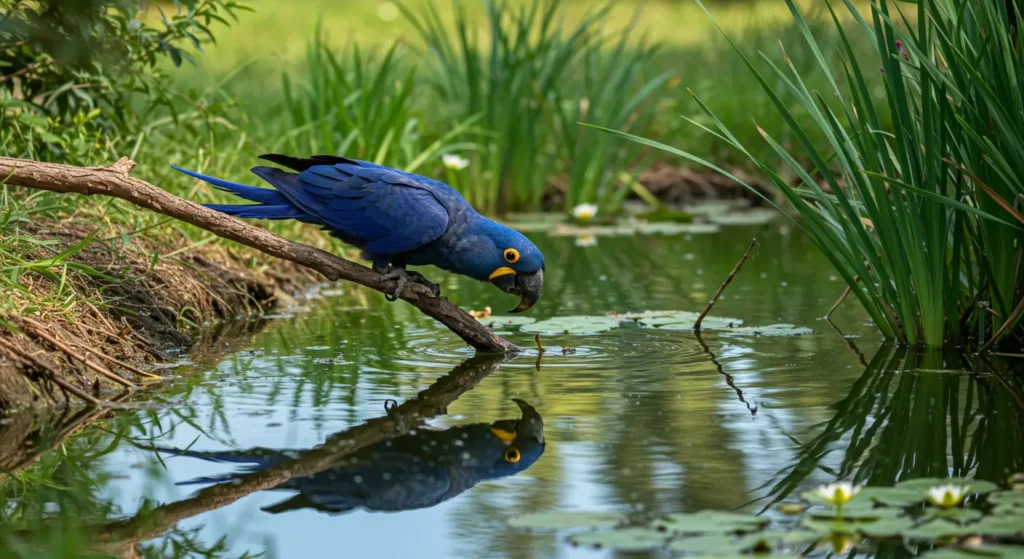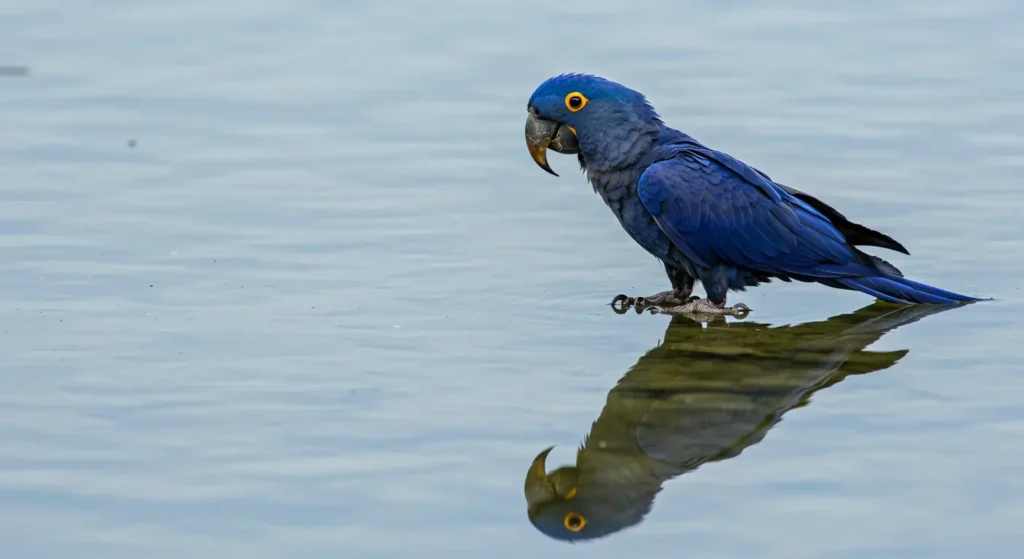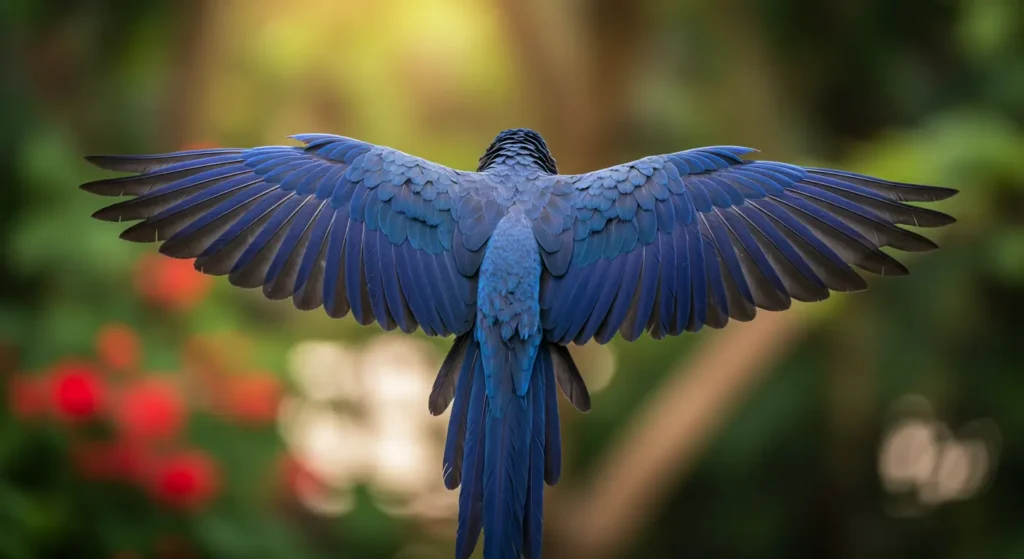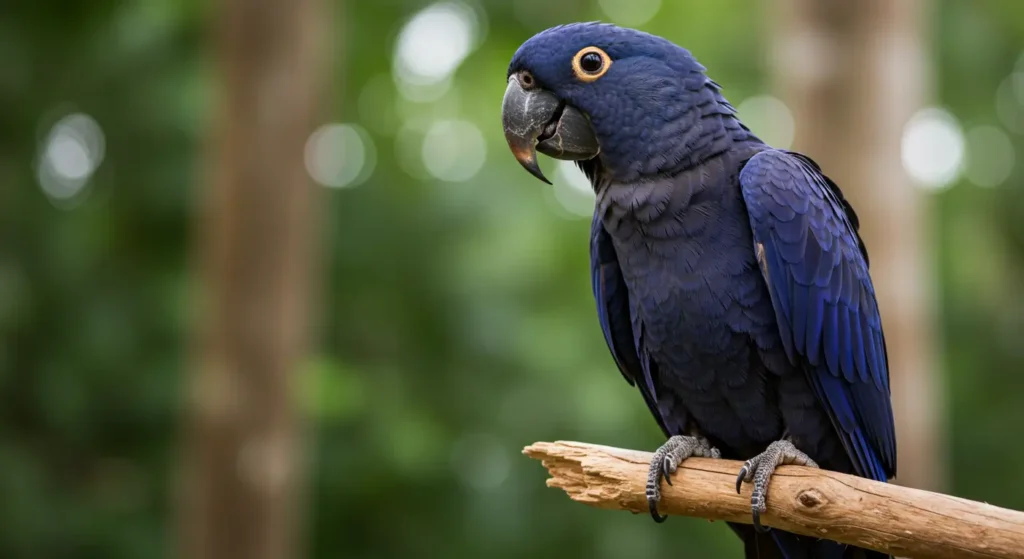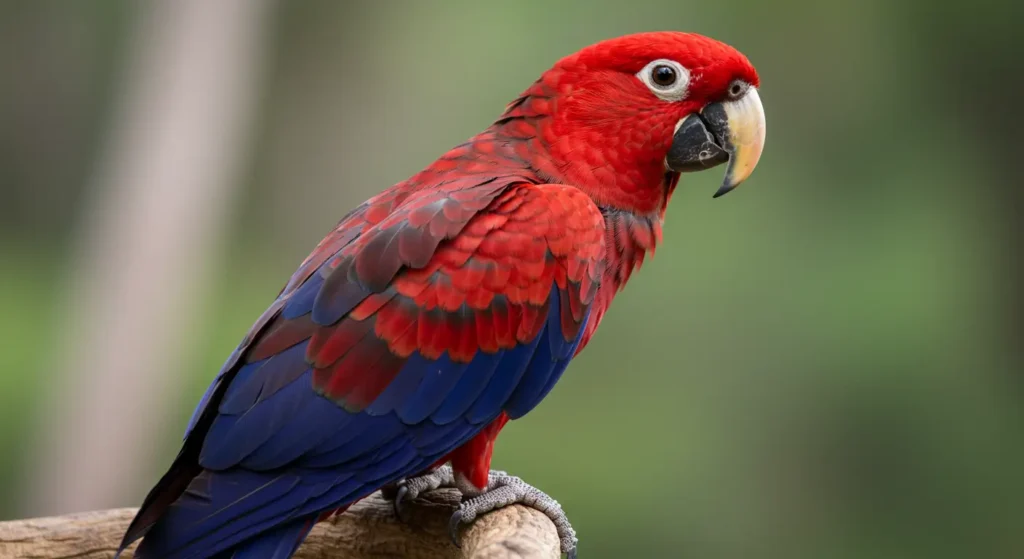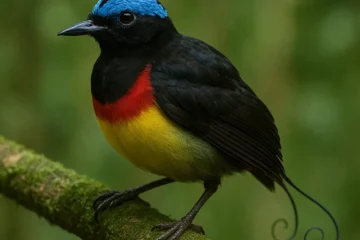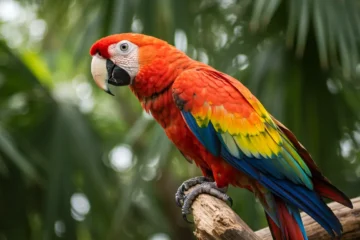The Hyacinth Macaw is the largest flying parrot in the world. Its right blue feathers and strong black beak make it easy to recognize. These birds can grow up to 40 inches long and weigh over 3 pounds.
They are known for their friendly nature and loud calls. You might find them in zoos, bird sanctuaries, or with licensed bird owners. They’re considered a vulnerable species due to habitat loss and illegal trade.
Images of Hyacinth Macaw
Price of Hyacinth Macaw
The Hyacinth Macaw is one of the most expensive pet birds in the world. The price of a Hyacinth Macaw usually ranges between $12,000 and $20,000, depending on the breeder, age, and health of the bird.
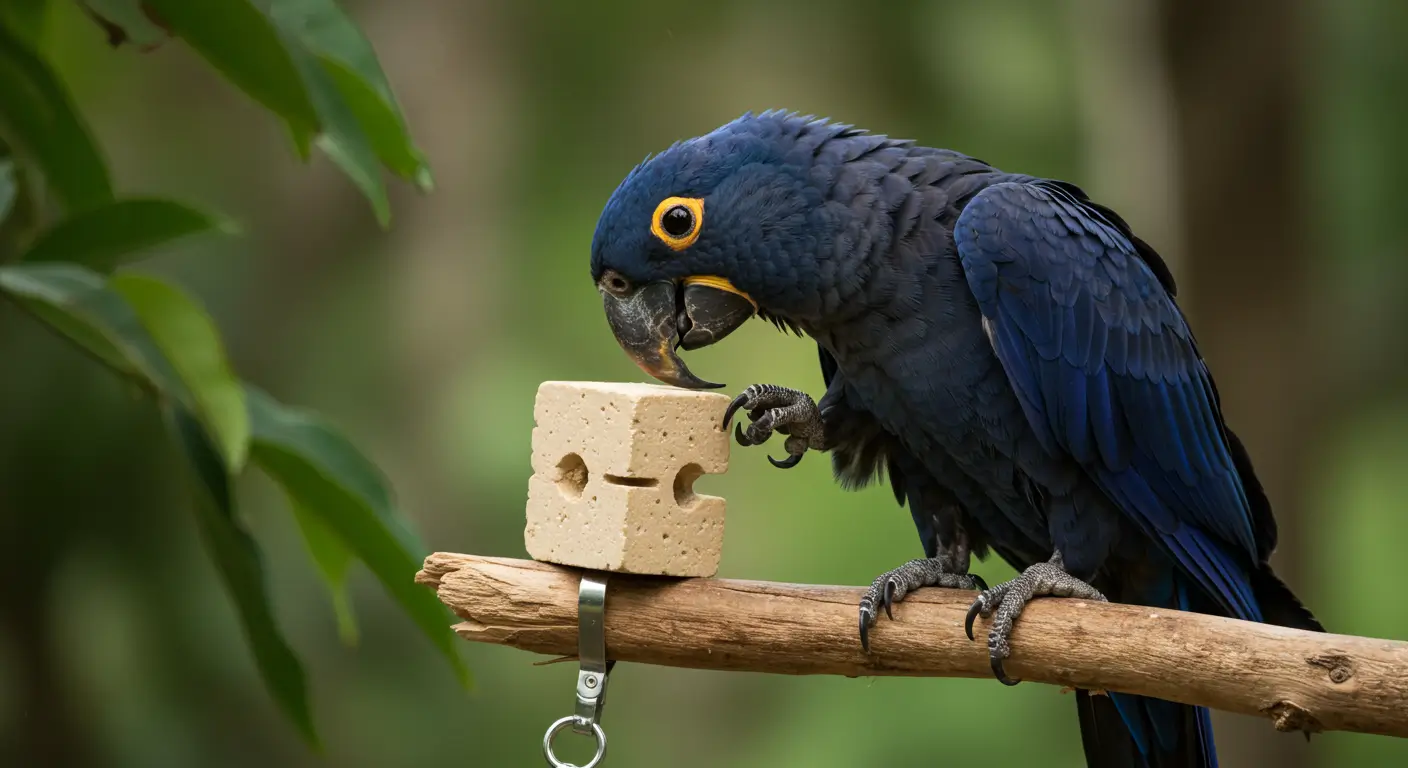
Characteristics of Hyacinth Macaw
This bird has some unique characteristics which make it one of the most eye-catching bird. Here are some specific characteristics of Hyacinth Macaw:
A Hyacinth Macaw lives about 30 to 35 years in the wild. In captivity with good care, it can reach 50 years or more. This bird has some interesting habits which become the reason of its high public attention. Here are some interesting facts related to Hyacinth Macaw: These birds can live over 60 years with proper care and this often refers to a lifelong ownership. Many owners even include them in wills. Their long lifespan makes them a serious commitment. This trait also appeals to those seeking a lifelong animal friend. This bird’s beak isn’t just for show. It can break into coconuts and even crush metal cages if not built strong enough. The bird keepers use durable feeding tools to handle this power. Their jaw strength helps them eat hard nuts like macadamias. Few parrots in the world can match this bite force. The Hyacinth Macaw comes from the Pantanal region in Brazil. Importation is tightly regulated to protect the species. American breeders follow strict laws to maintain ethical breeding. Zoos often work with international conservation groups. These efforts keep their population stable in captivity. Hyacinth Macaws raised as pets often attach to just one person. They show affection through cuddling, mimicry, and constant contact. This strong bonding makes them feel almost dog-like. However, it can lead to jealousy if they feel ignored. Owners are advised to spend daily time with them. Hyacinth Macaws are not the loudest parrots although they’re large. They’re surprisingly manageable in terms of noise. They vocalize mostly in the morning and evening. Their calls are deep and throaty rather than sharp. This makes them more suitable than expected for suburban bird lovers. Baby Hyacinth Macaws are born with dark eyes. Their irises lighten to a pale yellow as they grow. This shift helps breeders in estimating age. It also adds to their striking appearance as adults. Their bold yellow eye ring complements their cobalt feathers perfectly. Hyacinth Macaws explore everything in their environment. They often unlock cages, unscrew bolts, and solve complex puzzles. Their high intelligence keeps them mentally active. They become bored and destructive without stimulation. Owners often rotate toys weekly to keep them challenged. Hyacinth Macaws eat palm nuts that are hard to find in the U.S. The bird keepers offer macadamia, Brazil, and pine nuts as substitutes. These nuts match the fat content they need. Their diet is carefully balanced with fresh fruits and pellets. Proper nutrition is key to long-term health. Hyacinth Macaws show emotion through tiny facial movements. The bare skin patches near their eyes and beak may flush or wrinkle when excited. The bird handlers use these signs to notice their mood. It’s a subtle but helpful form of communication and not all parrots have this feature. The Hyacinth Macaw holds the title as the biggest flying parrot on Earth. It stretches up to 40 inches long with a wingspan over 4 feet. This size gives it a powerful presence in zoos and bird sanctuaries. Its size makes it a standout even among exotic birds. Hyacinth Macaws use hollowed palm trees in the wild to make nests. They adapt to nest boxes or even cabinets if given freedom in the house. Their nesting instincts kick in during spring. They often shred wood to prepare a space. Breeders replicate natural nesting conditions to encourage egg-laying. These macaws enjoy interaction with other parrots, especially of similar size. They often share enclosures with other macaws or large cockatoos. Socializing helps prevent boredom and behavioral issues. Careful pairing is however required needed to avoid aggression. Their playful nature makes them engaging companions. Their long tail isn’t just decorative, but it’s actually functional. They use it for stability when climbing and maneuvering in tight spaces. Bird exercises in homes often include ropes and perches to help exercise their tail. These feathers also play a role in flight balance. Damage to them affects their mobility. These birds use their feet like hands. They can hold food, toys, and even unscrew bolts using one foot. They’re often given puzzle toys to keep their feet and minds busy. Their zygodactyl feet (two toes forward, two back) help with grip. It’s an impressive display of coordination. These birds can be seen in all the renowned states of USA where they attract the people towards them. Here are some places at which these birds can be seen: There is no way that you should miss the chance to grab a picture of this bird. Here are certain key tips to capture good clicks of this bird. Use early morning light in Florida’s natural parks to catch the Hyacinth Macaw’s vibrant blue feathers. Focus on the eyes by using a fast shutter speed to freeze any sudden movement. Shoot from a low angle to show the full wingspan during flight. Use a telephoto lens in wildlife reserves like Texas’s birding trails to avoid disturbing the bird. Wait patiently near fruiting palm trees where they often feed and rest. Hyacinth Macaw are majestic birds which are somewhat rare in the overall population of birds. They possess a good level of intelligence and use strong beaks to crack nuts. They do not show much dominance using voice and change color with passing age. Their feet perform some specialized functions and stay with the humans during a long part of their life. Yes, but you need proper permits and must follow both federal and state exotic bird regulations. They mainly eat nuts like macadamias and almonds, along with fruits and vegetables.
General Characteristic
Feature Specific to Hyacinth Macaw
Scientific Name
Anodorhynchus hyacinthinus
Color
Deep cobalt-blue feathers with bright yellow around eyes and beak
Size
Grows up to 40 inches long (from head to tail)
Wingspan
Spans about 4 feet across
Weight
Weighs between 2.6 and 3.7 pounds
Diet
Eats mainly nuts from native palm trees
Beak Strength
Can crack open coconut shells with its beak
Noise Level
Very loud and not ideal for apartments or close neighbors
Breeding
Difficult to breed in captivity as they need space and bonding time
Activity Level
Extremely active, needs large cages and daily free-flight time
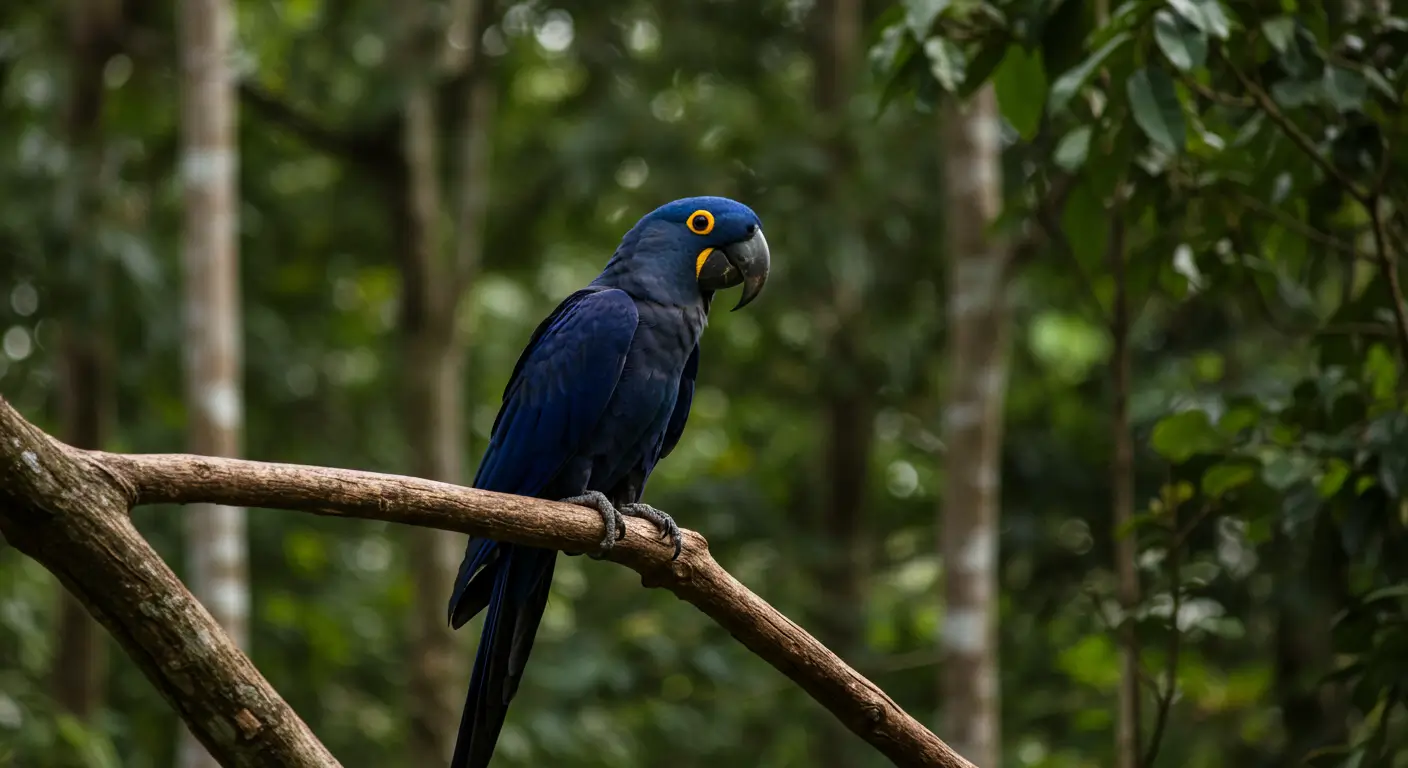
Life Span of Hyacinth Macaw
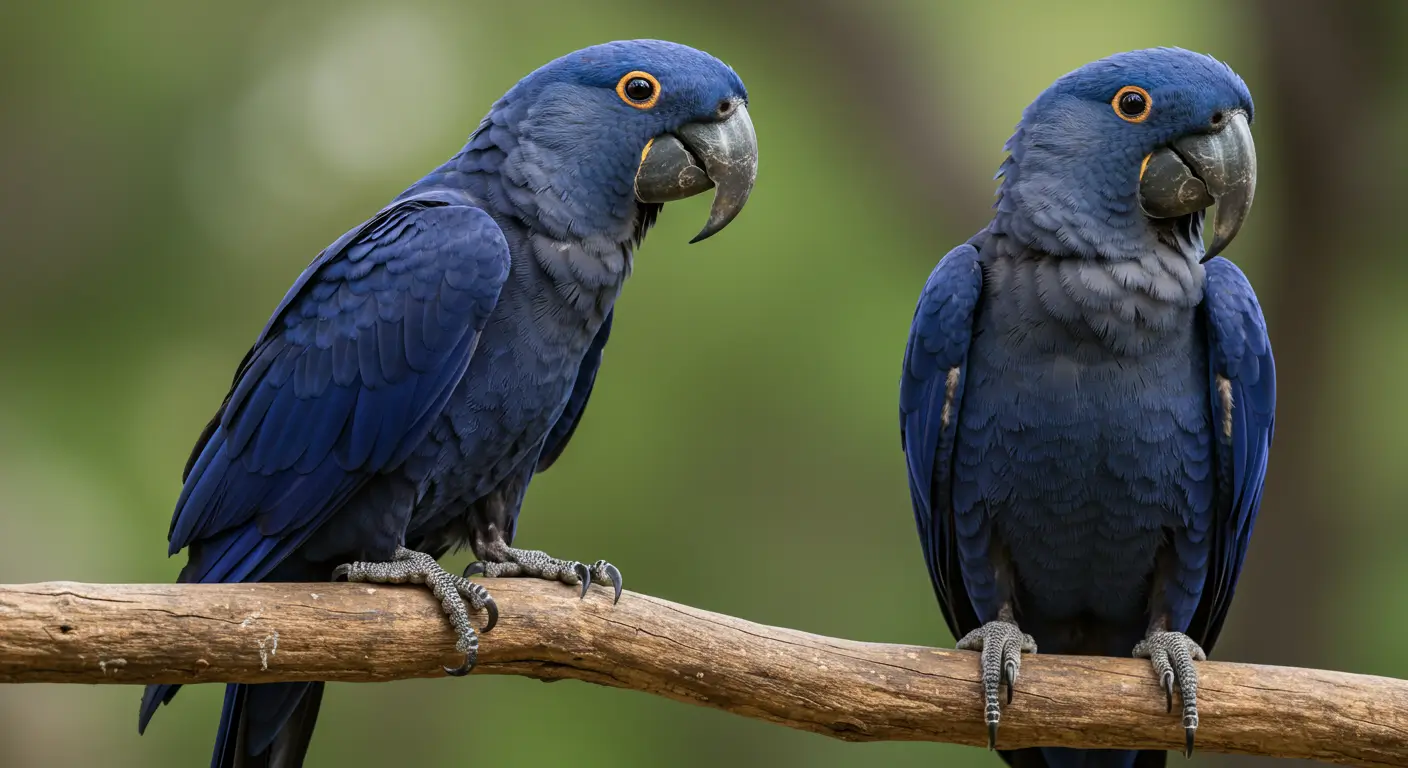
Interesting Facts Related to Hyacinth Macaw
1. Long-Lived Companions
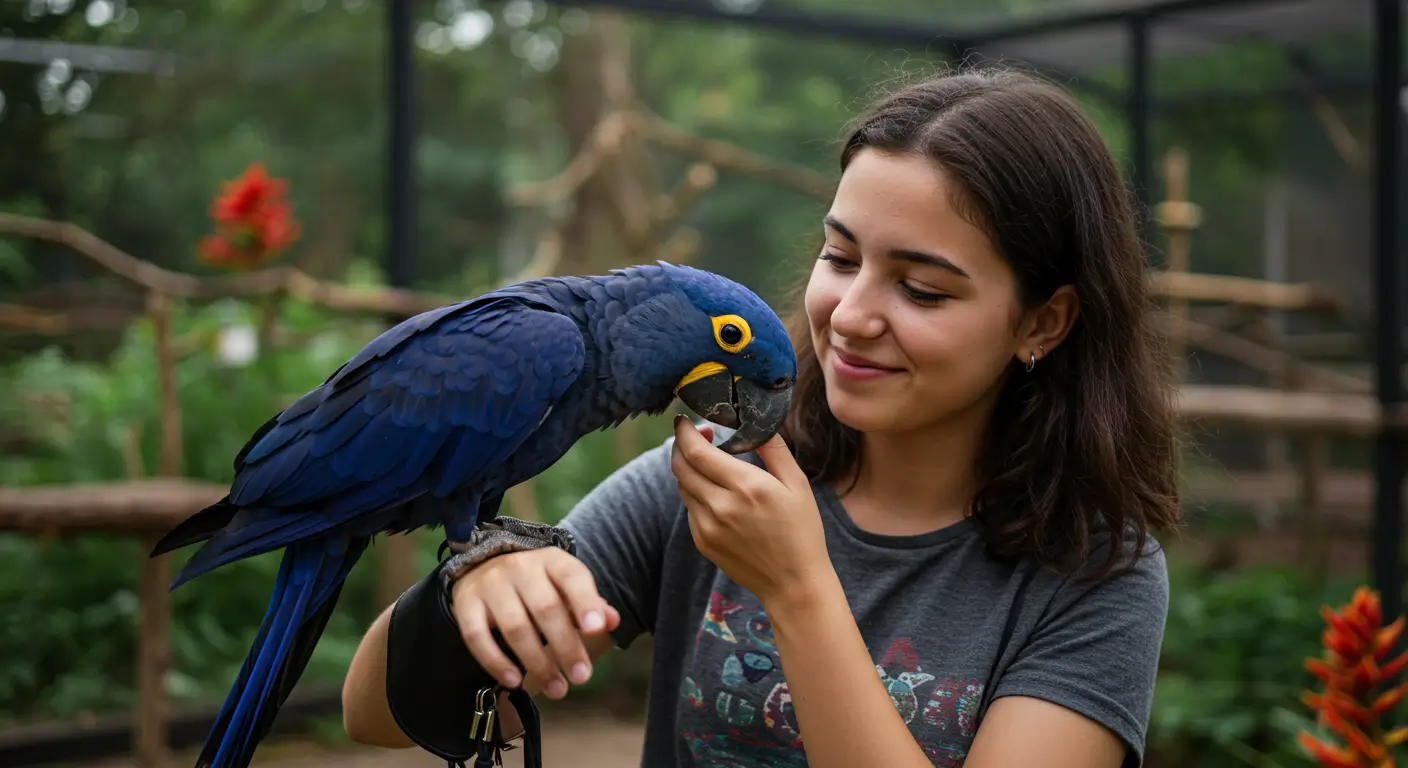
2. Jaw Strong Enough to Crack Coconuts
3. Natively Found Only in South America
4. Deep Bonding With One Human
5. Quiet for Their Size
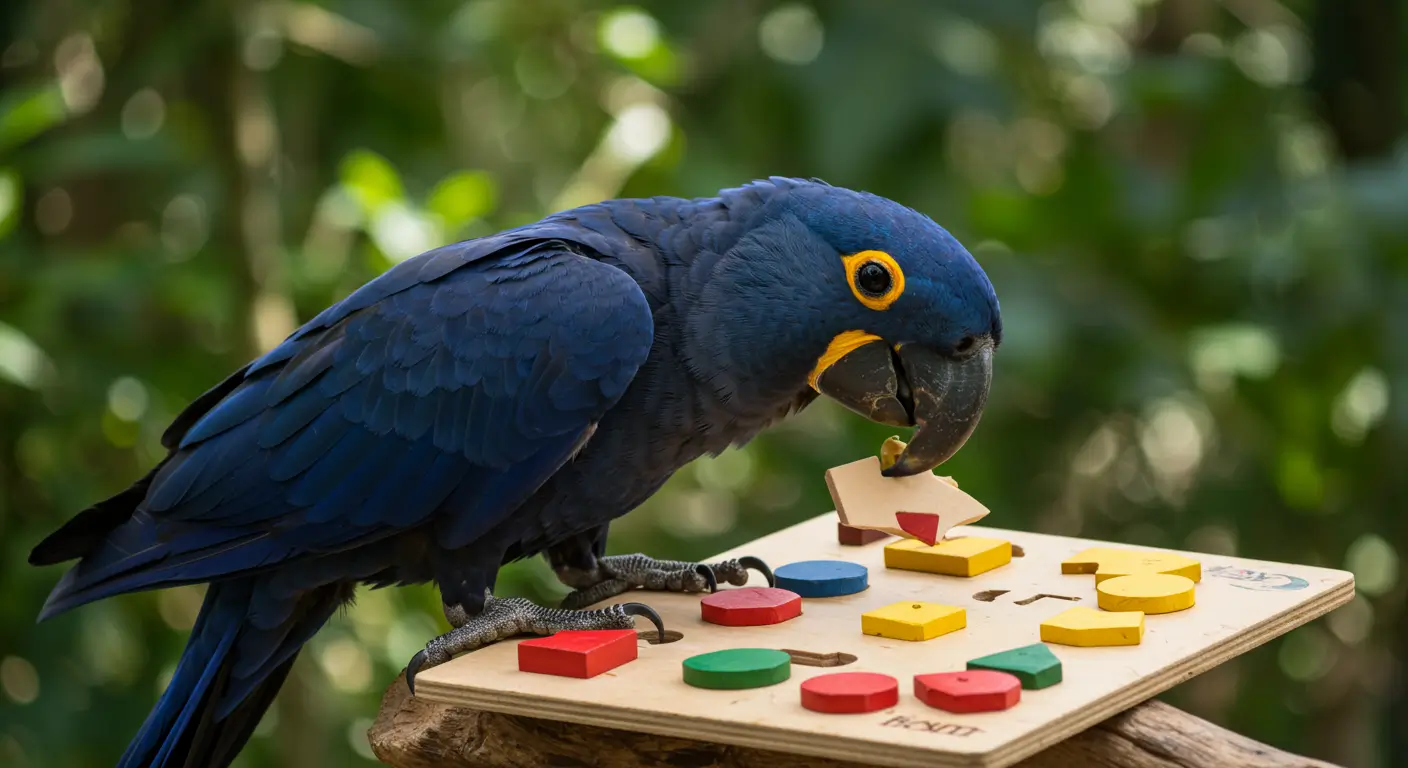
6. Eye Color Changes With Age
7. Naturally Curious and Problem-Solving
8. Diet Includes Specialized Nuts
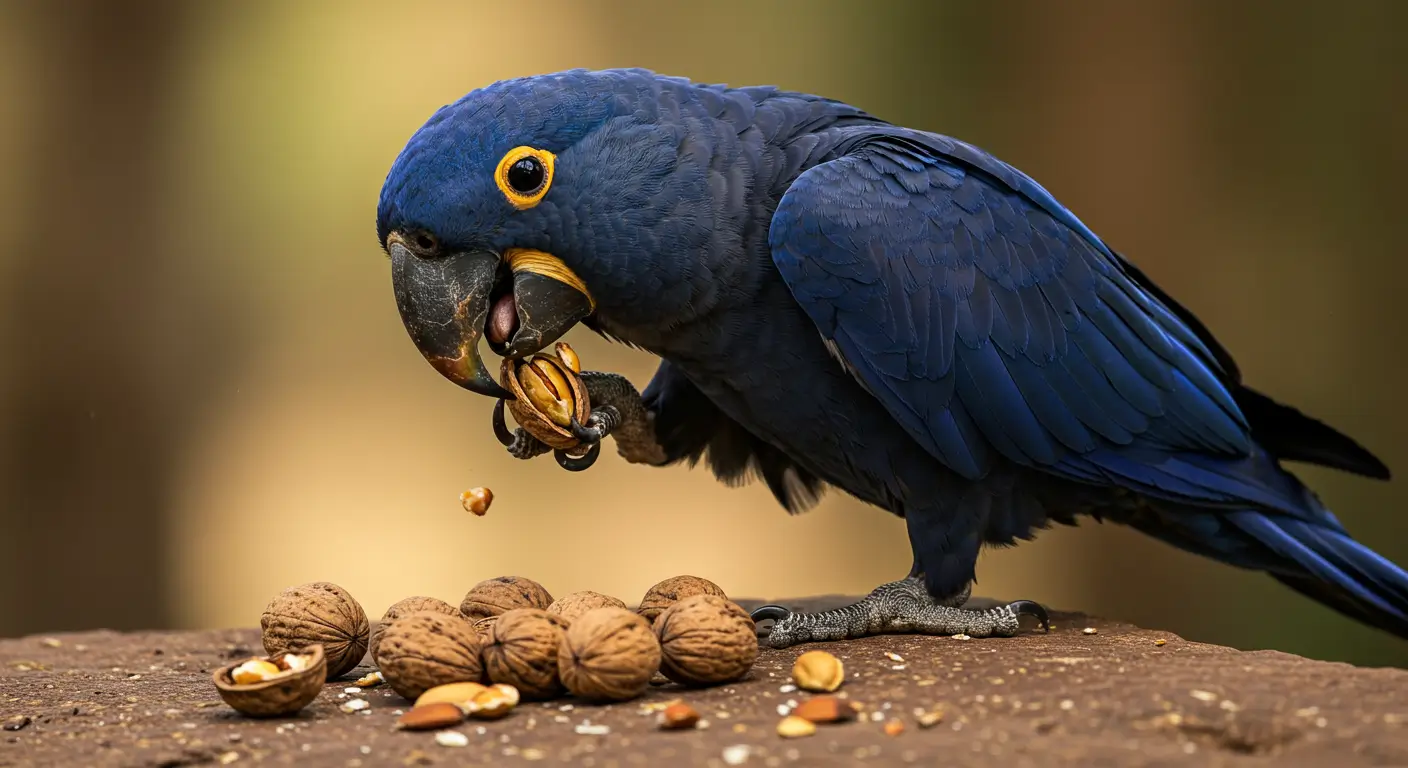
9. Face Feathers React to Emotions
10. Largest Flying Parrot in the World
11. Nesting Behavior Is Resourceful
12. Highly Social With Other Birds
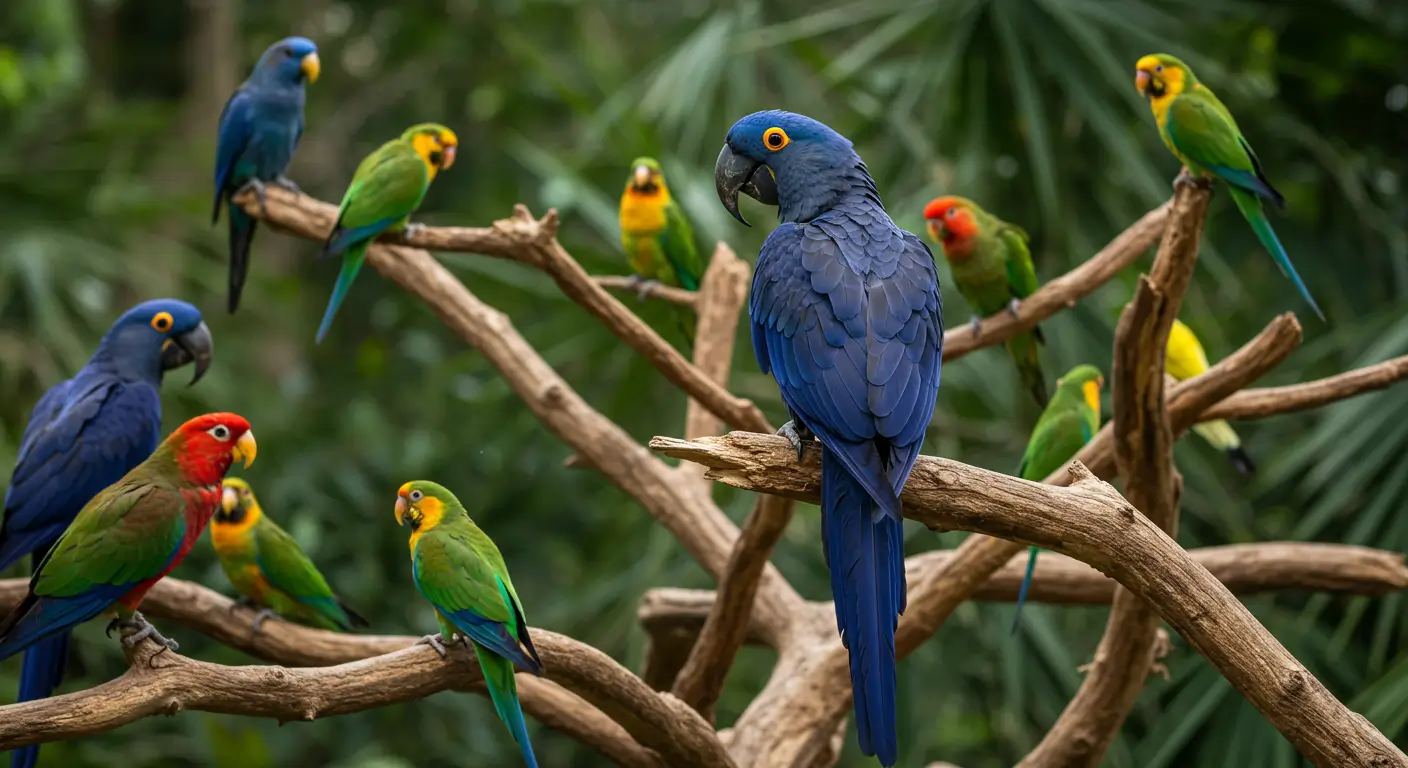
13. Tail Feathers Used for Balance
14.Unique Foot Functions
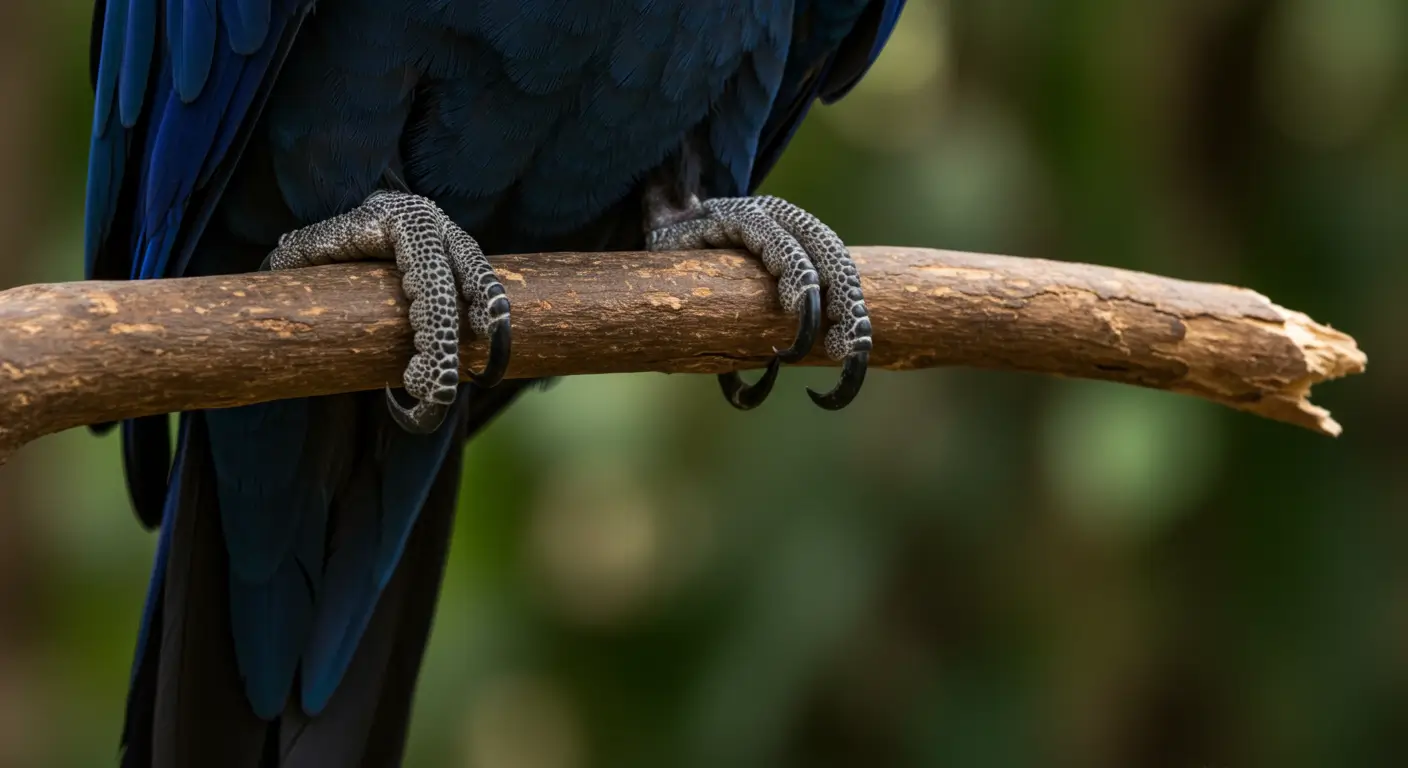
Sightseeing of Hyacinth Macaws
Location
State in Which it is Located
San Diego Zoo
California
Dallas World Aquarium
Texas
Zoo Miami
Florida
Bronx Zoo
New York
St. Louis Zoo
Missouri
Los Angeles Zoo
California
Smithsonian’s National Zoo
Washington D.C.
Columbus Zoo
Ohio
Audubon Zoo
Louisiana
Denver Zoo
Colorado
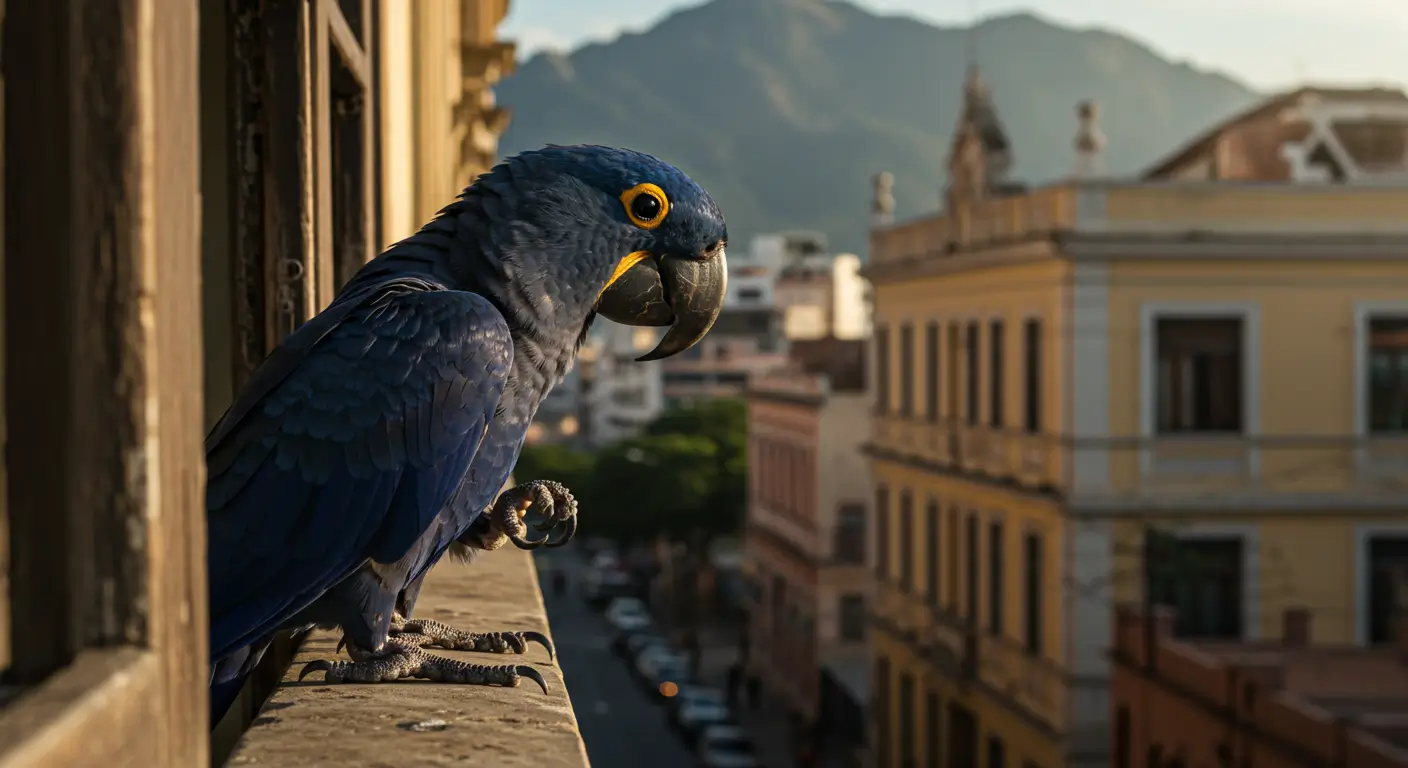
Photography Tips for Hyacinth Macaw
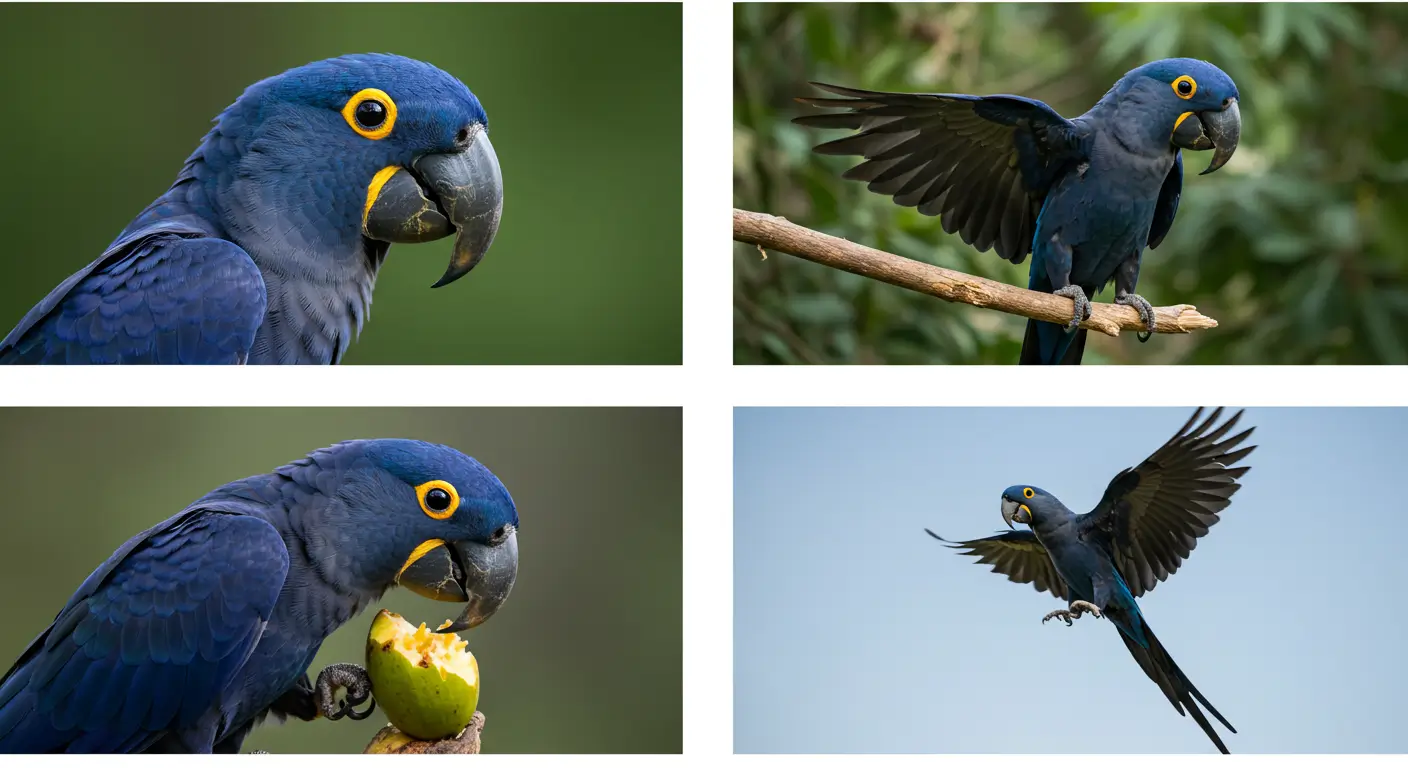
Closing Words
Most Related Questions
1. Can you legally own a Hyacinth Macaw in the US?
2. What does a Hyacinth Macaw eat?
